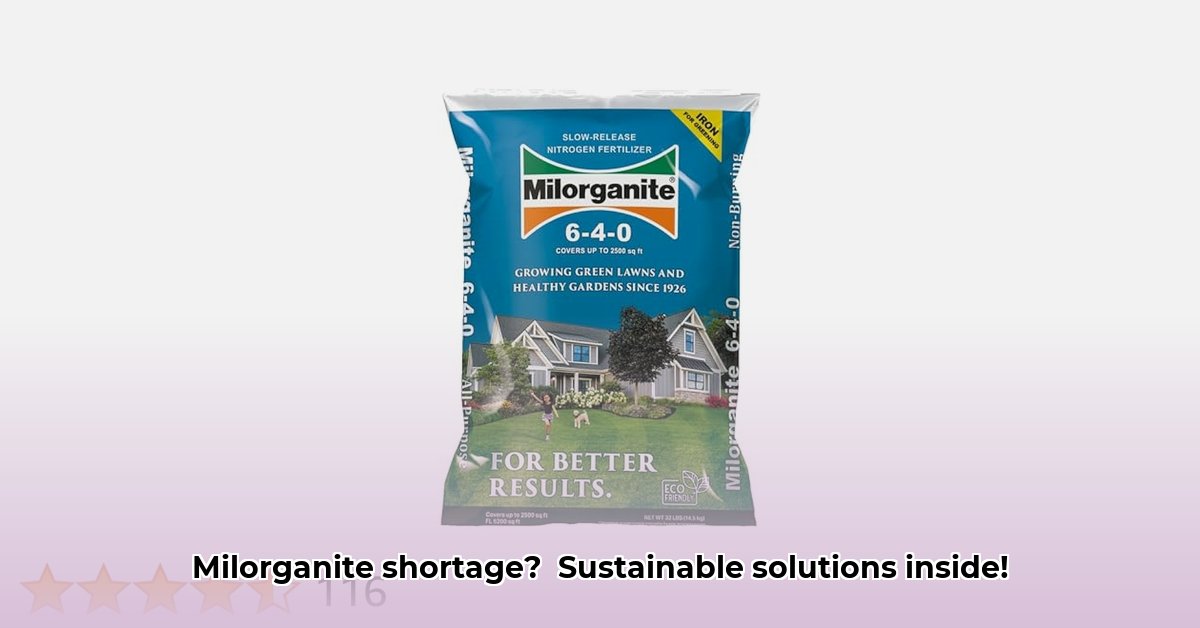
Finding Milorganite fertilizer, a popular choice for sustainable gardening, increasingly difficult? Empty shelves at retailers like Tractor Supply reflect a broader challenge in the sustainable fertilizer supply chain. This shortage isn't simply an inconvenience; it highlights systemic issues impacting the availability of eco-friendly gardening products. For more on gardening tools, check out Tractor Supply resources. This article explores the causes, consequences, and potential solutions to this growing problem.
Understanding the Milorganite Shortage: A Perfect Storm
The current Milorganite scarcity stems from a confluence of factors, creating a "perfect storm" for gardeners:
Surging Demand: The increasing popularity of organic gardening practices has significantly boosted demand for sustainable fertilizers like Milorganite. This surge outstrips current production capacity.
Supply Chain Disruptions: Like many industries, the fertilizer sector faces ongoing supply chain challenges. Securing raw materials and efficiently transporting finished products has become significantly more complex and costly.
Inventory Management: Effective tracking of Milorganite from production to retail shelves remains a challenge. Improved inventory management techniques are crucial to address shortages and avoid surpluses.
The Ripple Effect: Impact Across the Supply Chain
The Milorganite shortage doesn't just affect consumers; it impacts the entire supply chain:
- Consumers: Faced with empty shelves and potentially higher prices, consumers experience frustration and limited access to their preferred fertilizer. This raises concerns about the availability of sustainable gardening options.
- Retailers: Retailers like Tractor Supply experience lost sales and frustrated customers, impacting their bottom line and reputation.
- Producers: Milorganite producers grapple with increased demand, strained resources, and pressure to quickly find solutions to maintain supply.
Solutions for a Sustainable Future: A Multifaceted Approach
Addressing the Milorganite shortage requires a multifaceted approach involving collaboration among all stakeholders:
Increased Production: Milorganite producers can explore strategies to increase production capacity, including upgrading existing facilities, investing in automation, and optimizing existing processes. This requires significant investment but is vital to meet growing demand.
Enhanced Distribution: Optimizing transportation routes, utilizing more efficient modes of transport (e.g., rail), and improving warehouse management are key to ensuring timely product delivery. Real-time inventory tracking systems can also play a pivotal role here.
Improved Forecasting: Accurate demand forecasting – using sophisticated predictive modeling – will allow for more efficient production planning and inventory management across the supply chain. This strategy minimizes both shortages and unnecessary surpluses.
Exploring Alternatives: While no perfect substitute exists, exploring and promoting alternative organic fertilizers provides short-term options for consumers while long-term solutions are developed. Educating consumers about these options can also alleviate pressure on the Milorganite supply.
Collaboration & Communication: Open communication and collaborative partnerships between producers, distributors (including Tractor Supply), and governing bodies are essential. Sharing data, coordinating efforts, and proactively planning will foster a more robust and responsive system.
A Path Forward: Building a Resilient Supply Chain
The Milorganite shortage underscores the importance of resilient supply chains for sustainable products. This situation presents an opportunity for innovation, greater collaboration, and a more sustainable approach to providing gardeners with access to the eco-friendly products they need. By proactively addressing the challenges outlined above, the industry can build a more efficient and responsive system to ensure the continued availability of sustainable fertilizers like Milorganite.